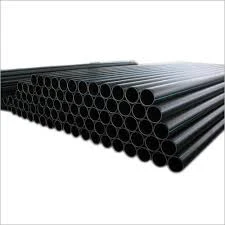Dec . 28, 2024 16:42 Back to list
DW HDPE Pipe Applications and Benefits for Water Management Systems
Understanding DWC HDPE Pipe A Comprehensive Overview
In the world of modern infrastructure, the choice of materials for piping systems is critical. One such innovation that has gained significant attention is the Double Wall Corrugated High-Density Polyethylene (DWC HDPE) pipe. This article delves into the characteristics, advantages, applications, and installation of DWC HDPE pipes, highlighting why they are becoming a preferred choice in various industries.
What is DWC HDPE Pipe?
DWC HDPE pipe is a specialized type of piping composed of high-density polyethylene, characterized by its double-wall structure. The outer wall typically boasts a corrugated design, which enhances its strength and impact resistance. The inner wall is usually smooth, allowing for efficient fluid flow. This dual construction aids in the overall performance and durability of the pipe, making it suitable for various applications.
Key Features and Benefits
1. Durability DWC HDPE pipes are highly resistant to corrosion, chemicals, and environmental factors, significantly extending their lifespan compared to traditional materials like concrete or metal. This durability makes them a reliable choice for sewerage and drainage systems.
2. Lightweight One of the significant advantages of DWC HDPE pipes is their lightweight nature. This feature not only eases transportation but also simplifies the installation process, reducing labor and overall project costs.
3. High Flow Capacity The smooth inner wall design of DWC HDPE pipes ensures minimal friction loss, promoting greater flow efficiency. This feature is particularly advantageous in applications requiring high volume water conveyance, such as stormwater management or irrigation systems.
4. Environmental Benefits DWC HDPE pipes are recyclable, contributing to sustainable development practices. Additionally, their resistance to leaching makes them an environmentally friendly choice for transporting potable water.
5. Flexibility and Joint Integrity The flexibility of HDPE allows for various jointing methods, including butt fusion and electrofusion, providing robust connections and minimizing the risk of leaks.
Applications of DWC HDPE Pipe
DWC HDPE pipes are versatile and find applications across different sectors. Here are some notable uses
- Stormwater Management These pipes are commonly used in stormwater drainage systems due to their excellent corrosion resistance and high flow capacity, effectively managing runoff and reducing flooding risks
.dwc hdpe pipe

- Sewerage Systems The durability and resistance to chemicals of DWC HDPE pipes make them ideal for underground sewage networks, ensuring long-term functionality without the risk of deterioration.
- Irrigation Systems Their lightweight nature and smooth inner surface allow for efficient irrigation solutions, aiding agricultural practices with effective water distribution.
- Telecommunication Applications DWC HDPE pipes are also utilized as conduits for fiber optic cables, protecting these sensitive technologies from environmental damage.
Installation Practices
Installing DWC HDPE pipes requires careful planning and execution to maximize their benefits. Here are key steps in the installation process
1. Site Assessment Before installation, a thorough site assessment is essential to determine the appropriate size and configuration of pipes based on the specific application and environmental conditions.
2. Trenching Proper trenching and bedding are crucial to provide support for the pipes. The trench should be wide enough to accommodate the pipe and allow for proper backfill material.
3. Jointing Methods Depending on the application and required specifications, various jointing methods like butt fusion or electrofusion should be chosen to ensure strong and leak-proof connections.
4. Backfilling After installation, appropriate backfill material should be used to protect the pipes from external loads and shifting soil.
5. Testing Conducting pressure tests is essential to ensure the integrity of the installed piping system before it goes into service.
Conclusion
DWC HDPE pipes represent a significant advancement in piping technology, offering unmatched durability, flexibility, and efficiency. Their ability to withstand harsh conditions while ensuring high flow capacity makes them a top choice for a wide array of applications. As industries continue to seek sustainable and reliable infrastructure solutions, DWC HDPE pipes will likely play an increasingly vital role in shaping the future of construction and environmental management.
-
PVC Grey Sheet for Extraction: Chemical Resistant & Durable
NewsAug.19,2025
-
Durable PVC Pipe Fittings for Plumbing & Irrigation Needs
NewsAug.18,2025
-
HDPE Steel Belt Reinforced Spiral Corrugated Pipe | High Strength
NewsAug.17,2025
-
HDPE Pipe Fittings: Durable, Leak-Proof Solutions
NewsAug.16,2025
-
Premium CPVC Sheet: High-Temp & Chemical Resistant Solutions
NewsAug.15,2025
-
Durable PPR Pipe for Hot & Cold Water Systems - Easy Install
NewsAug.14,2025

